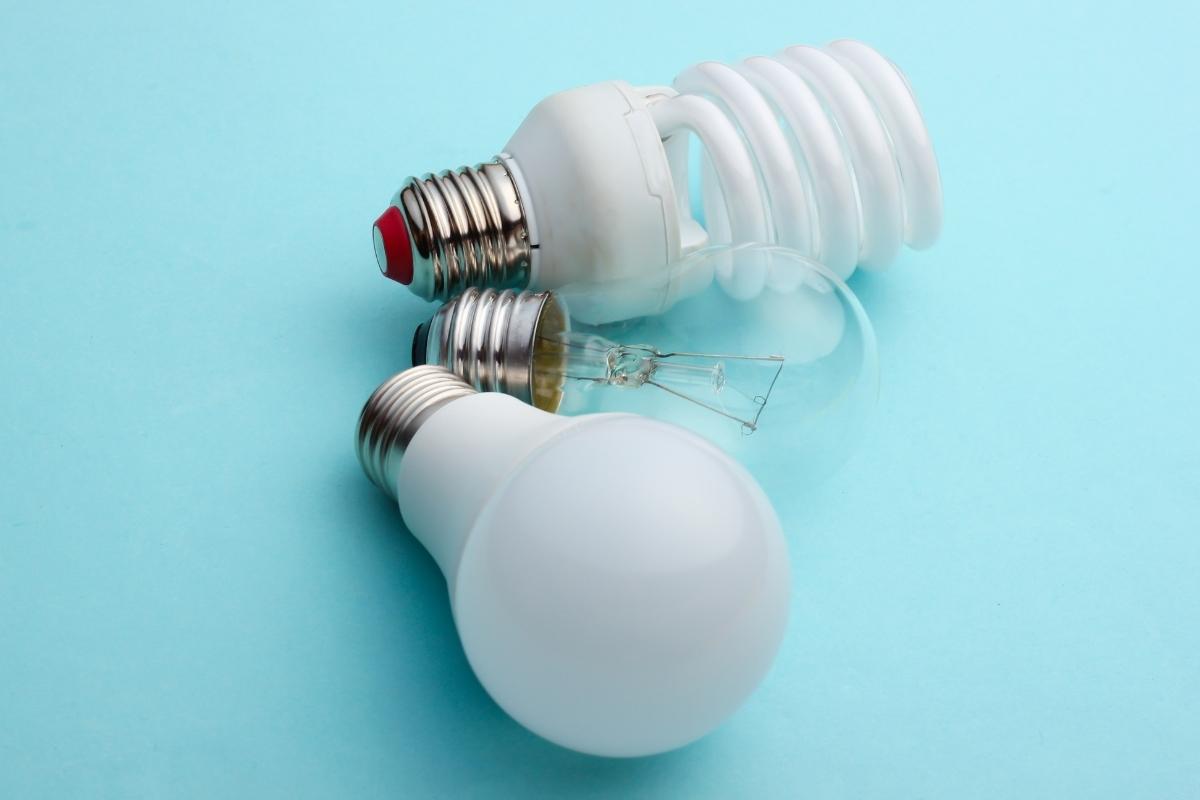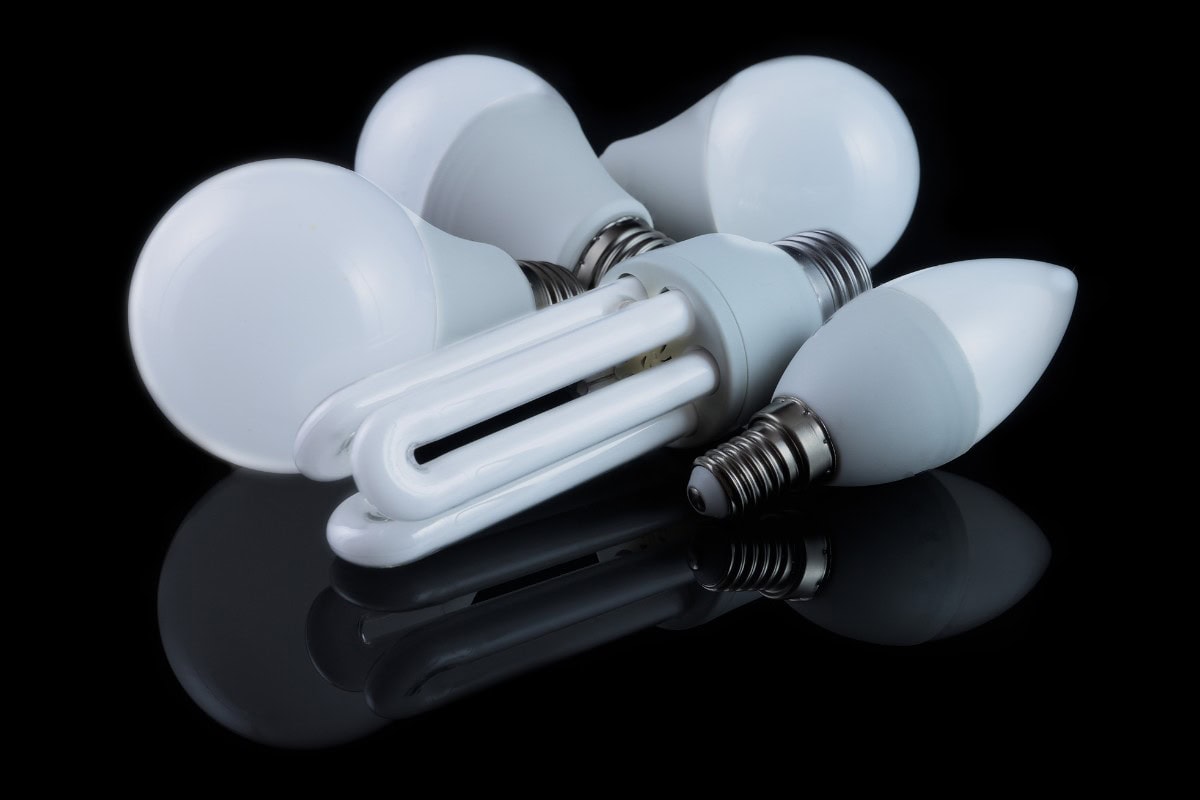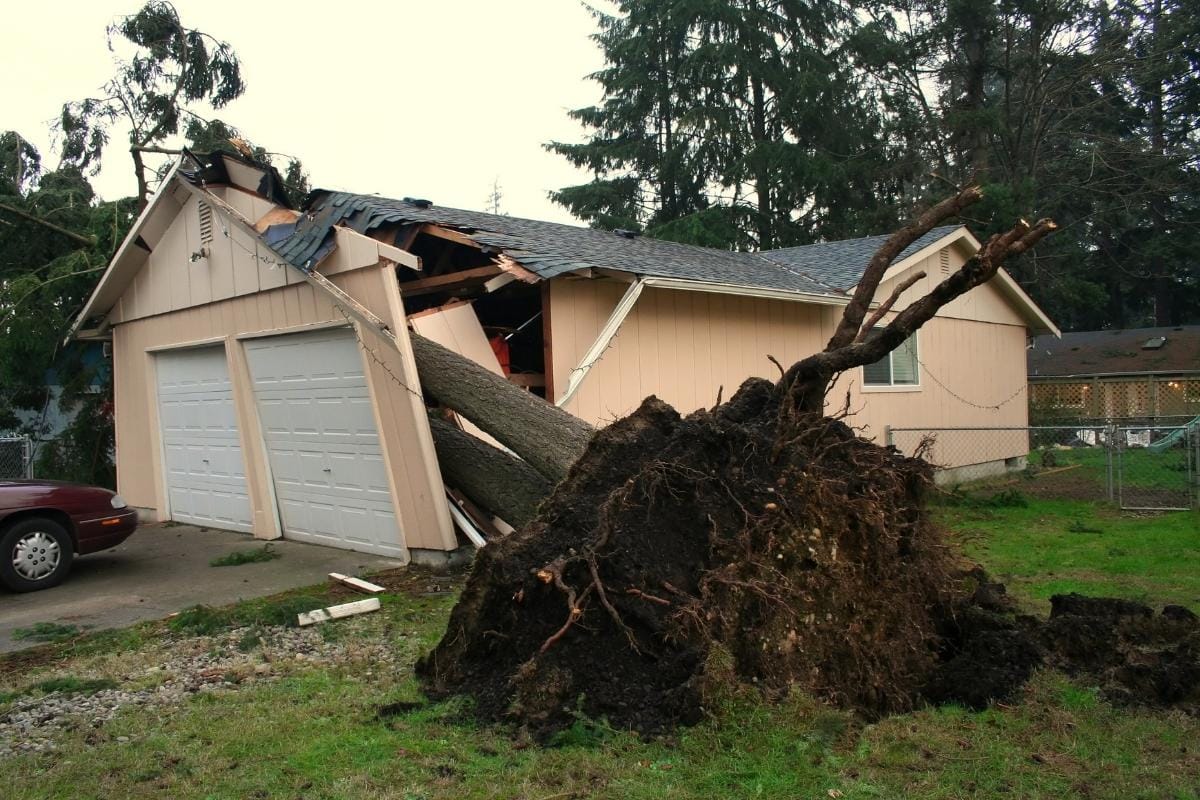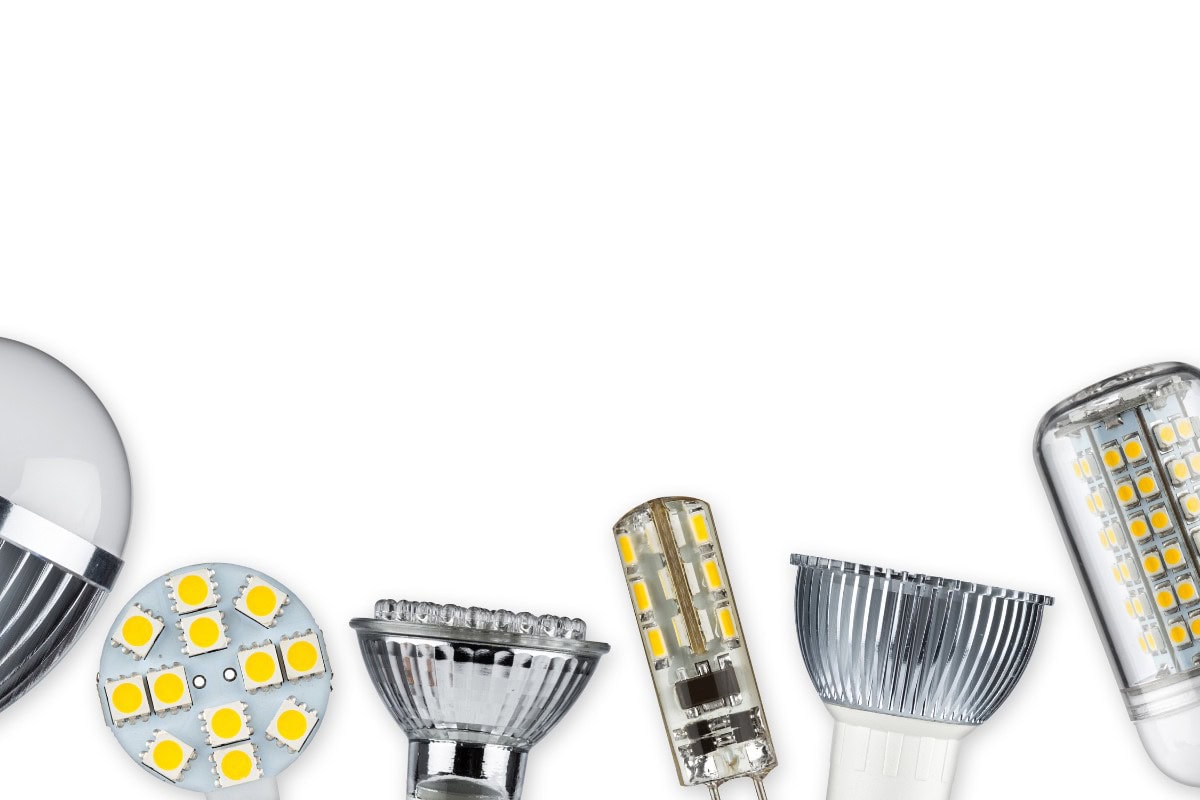Lighting our houses has come a long way since the humble candle. What you may not know is that Edison didn’t invent the first light bulb. There were numerous attempts by people from around 1802 to create artificial light, and the first item that could be properly called a light bulb in the way we understand it was invented by a British scientist, Warren de la Rue, in 1840.
It worked well, but it was too expensive for commercial use because of the use of a coiled platinum filament. Next up came another British physicist, Joseph Wilson Swan. He conducted various experiments and by 1860 had a working prototype, but its lifetime was too short to be considered a good producer of light.
He kept at it and by 1878 had developed a longer-lasting bulb that used treated cotton thread as a filament. In 1874 a Canadian patent was filed by Woodward and Evans. They used carbon rods in glass cylinders filled with nitrogen but were unsuccessful in trying to commercialize their invention, and so Edison bought their patent in 1879.
Edison went on to discover that a carbonized bamboo filament could last for over 1200 hours, and with that the incandescent light bulb as we understand it was born. It’s served us well for the best part of 130 years, but this original design is finally being phased out across the world in favor of more energy-efficient bulbs using different technologies and materials.
Now there are a number of different types of bulbs being made, and let’s take a look at some of the most common types of light bulbs.
Traditional Light Bulbs
The traditional light bulbs are more technically known as incandescent, tungsten filament, or GLS (General Lighting Service) bulbs. They were invented over 100 years ago with Edison’s original carbon filament being replaced with tungsten around 1906.
They are extremely inefficient as they only convert about 5-10% of the electricity they use into visible light. How they work is that the filament is heated up until it glows and gives off that familiar yellowish light which is why they are called incandescent. They don’t last very long as the filament gradually wears out through evaporation with an average life of between 750 and 1,000 hours.
Incandescent Light Bulbs
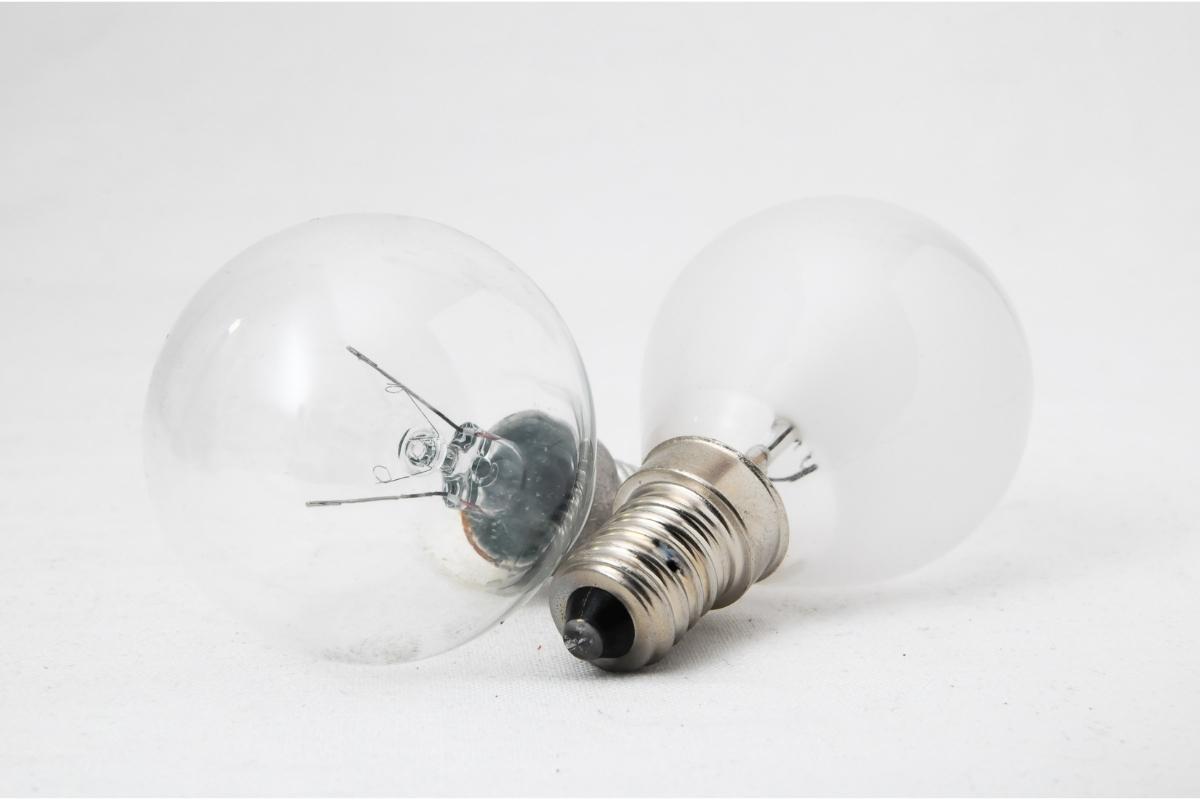
The incandescent bulb is the type of light bulb we are most familiar with. This is the type of light bulb Thomas Edison invented, and it consists of an element heated to the point creating heat inside a sealed glass enclosure. Incandescent bulbs provide light by a process known as Incandescence. Incandescent bulbs have a thin tungsten filament. When the electric current is passed through it, the filament generates lots of heat that results in visible light. Incandescence bulbs were the most used bulb in the world, but the newer technologies coming every day, they are vastly replacing these types of bulbs.
How They Work
All incandescent bulbs function in a similar manner. Electric current is passed through a tungsten filament that causes resistance to the electricity. This causes the tungsten filament to heat up to an extremely high temperature. According to the basic law of physics, Objects emit electromagnetic waves with a frequency determined by their temperature. The electromagnetic waves result in visible light at the enormously high temperature of the tungsten filament.
Incandescent bulbs have a housing of glass to avoid oxygen inside the bulb. As the filament is flammable, it would burn up if there was oxygen present inside the glass. Also, tungsten filament won’t work if there is no gas inside. Basically, all incandescent bulbs work with a small amount of nitrogen and argon gases inside, and there are some bulbs available in the market which work with a vacuum.
Tungsten filament cannot burn up in the presence of argon and nitrogen gas even if it is flammable as argon and nitrogen gasses are chemically inert. Some premium and expensive bulbs also consist of krypton gas inside as krypton is also static and a poor conductor of heat. But as krypton is highly expensive and a rare element, it is not used that frequently and is often avoided or used in conjunction with nitrogen gas.
Characteristics
Incandescent bulbs are not energy-efficient bulbs, and they waste 90% of the energy as heat while generating light. That way, they consume lots of energy and result in less light. With only 10% of the energy consumed being used to produce light, incandescent bulbs always had extremely poor efficiency and are now being phased out across the world.
Also, they have a very short lifespan, and people need to change the bulb often depending on the times they are used. They usually last between 700 and 1,000 hours, are fragile and break easily, and tend to blow suddenly. Incandescent bulbs come in a variety of shapes and sizes. You can get them clear, with color or a soft white coating on the inside, and can be used with a dimmer.
Yet most of us still use the quality of the light produced by this type of bulb as the benchmark for what ‘good’ artificial light should look like. This may well be because it’s the light older folk grew up with, but they are also very ‘warm’, emitting a yellowish light between 2,300 and 2,700 Kelvin, while there are also many people who dislike yellowish warm color light and prefer cool color light. This kind of light has an inviting quality and is very complimentary to skin tones.
They get very hot when lit, so great care should be taken to avoid fire hazards. It must be ensured that no flammable object is near and above the bulb as heat moves in an upward direction. Also, these kinds of bulbs should not be insulated as they heat up easily and can burn out if heat is accumulated inside.
Halogen Light Bulbs
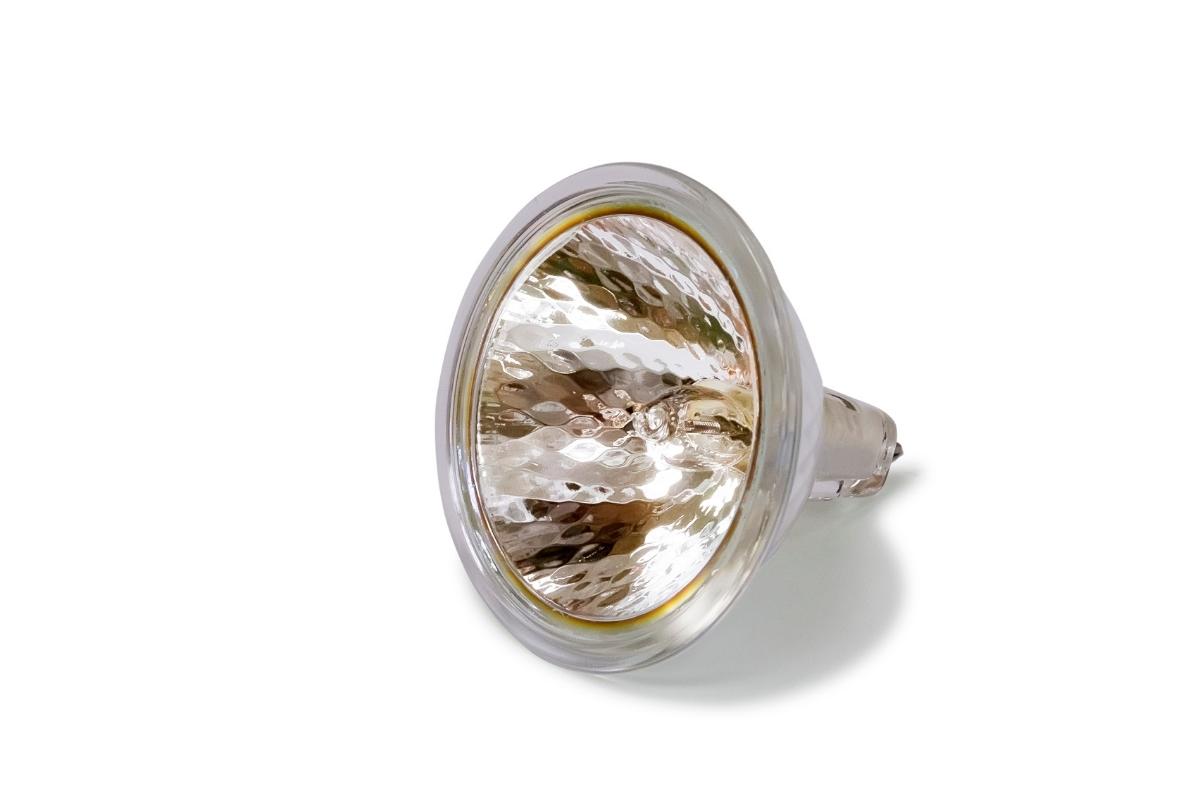
Halogen light bulbs are another type of incandescent bulb that uses halogen gas to improve the energy efficiency and life of the incandescent. Because of the higher heat produced, the halogen bulb is brighter per watt. Halogen light bulbs are useful where additional light output is needed. You should take precautions due to the high heat generated by these bulbs, ensuring combustibles are at a safe distance. They are most commonly used in downlights, under cabinet lighting, and pendant lights.
How They Work
Halogen bulbs function the same way as incandescent bulbs, but they are more energy-efficient and have a longer rated life. An incandescent Bulb has a tungsten filament in it, and as the electric current passes through it, it heats up, resulting in visible light. Halogen bulbs also have filaments, but they have halogen gas inside, so they can run at a higher temperature and are slightly more energy-efficient than the traditional light bulbs, and they last longer, between 2,000 and 4,000 hours.
Characteristics
Halogen bulbs are whiter than incandescent bulbs. They often feature a parabolic aluminized reflector which gives them a very crisp, bright white light. Because of this, they are mainly used in downlight or spotlight fittings in kitchens and bathrooms, where the more intense light is useful. Their light is whiter (or cooler) than the standard bulb at about 3,400 Kelvin. This type of light renders colors much closer to their true value, i.e., as they would be seen in bright sunlight, so they are ideal for environments where this is important. As halogen bulbs provide excellent light, they can be used in places where bright light is the main criterion. As the size of the bulb is compact, it can be filled with gases like xenon or krypton to make it a more economical choice.
Halogen bulbs work effectively only when the surface of the bulb gets hot. They may not provide the expected output if the bulb surface is not as hot as required. The halogen gas inside the bulb may not react with the filament if the bulb’s surface is cool. Also, Halogen bulbs are more expensive than incandescent bulbs, and they are harder to maintain.
They also waste energy by generating four times more heat than an average incandescent bulb, and the temperatures reached can be over 1,200 degrees. This can cause a serious fire hazard if they are fitted in unsuitable fixtures. Also, as the surface of the bulb needs to be hot, it must be made of heavy glass that has good strength and heat resistance too. The halogen bulbs must not be touched with bare hands and instead gloves should be used as they can be very hot to touch. As they burn at a much hotter temperature than ordinary tungsten light bulbs, their casing is made from quartz rather than glass.
As halogen bulbs consume less energy and save a bit more money, they are a good replacement for standard incandescent bulbs. However, there are also some limitations and common disadvantages of halogen bulbs that must be considered before replacing the ones we already have. Although halogen bulbs do have a slightly better energy to lumens output than a standard incandescent bulb, they are still not considered to be energy-efficient types of light bulbs.
One downside of halogen spots is that you tend to use a lot of them, i.e., an average kitchen with downlighting will have at least 6, and the tendency is to use ones that are unnecessarily bright, meaning more electricity is being used than really needed to light a room. So, if you don’t fancy moving to the lower energy bulbs available, you can still save energy by simply downgrading the wattage of your halogen light bulbs.
Low-Energy Light Bulbs
Currently, there are two sorts of low-energy light bulbs available: the CFL (Compact Fluorescent Lamp) and LED (Light Emitting Diode).
The old-fashioned incandescent bulb has been phased out, although it is still available for industrial uses. You could be forgiven for getting confused with the ever-increasing myriad of light bulb options that are now available under the ‘energy-saving’ banner.
Maybe now is time to find out about the new generation of energy-saving light bulbs. As lighting is responsible for about 18% of an ordinary household’s energy bill, reducing the cost of your lighting could result in some serious savings.
Fluorescent Light Bulbs
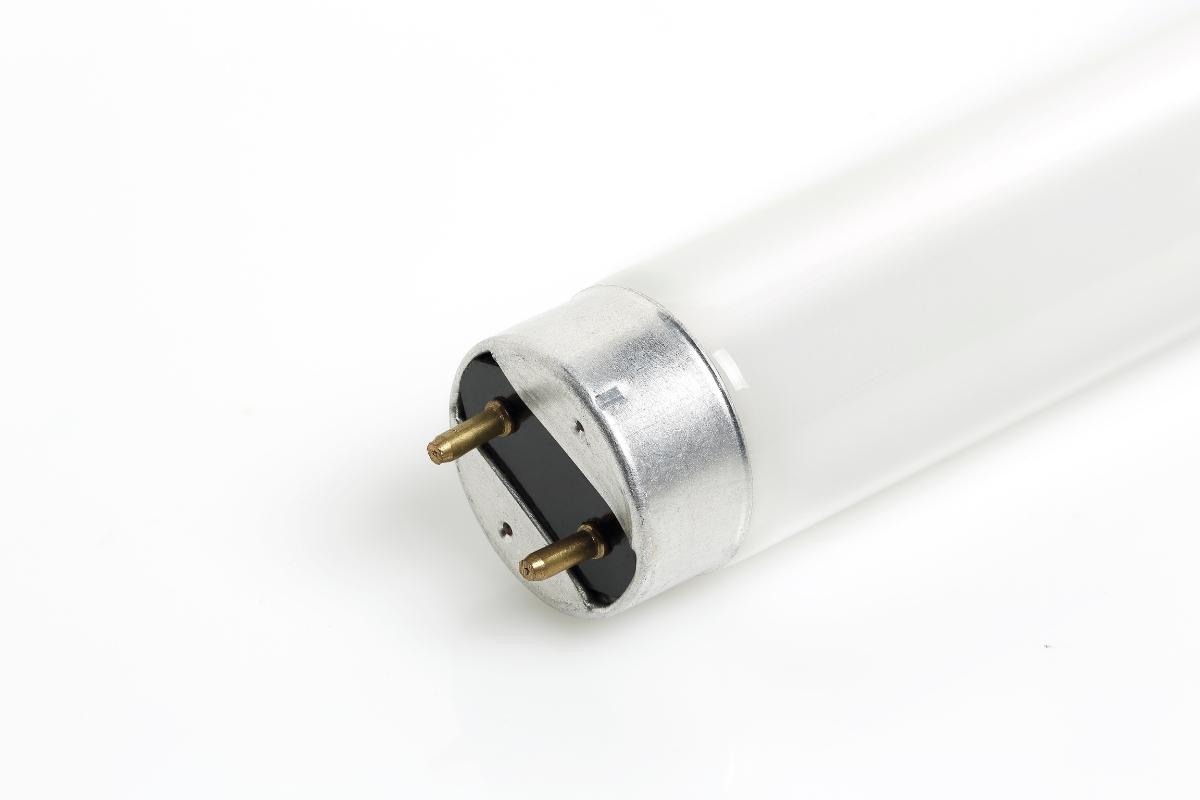
Fluorescent light bulbs consume less energy than standard incandescent bulbs. They can have superior color rendition as well as a longer rated life, so it is not unanticipated that they have displaced old standard bulbs in numerous applications.
How They Work
Fluorescent lights consist of a light tube filled with low-pressure mercury vapor and gas that produces ultraviolet light once the gas is excited by electric current. This ultraviolet light is in a spectrum not visible to humans, so the tube is coated with phosphor causing a fluorescence that creates the visible light we see, and the glass contains the harmful UV light inside the tube.
A ballast is required to start a fluorescent lamp, and the ballast will ignite and maintain the condition to keep producing the light. Fluorescent lamps are much more energy-efficient than incandescent bulbs, converting about 85% of the energy into visible light.
Characteristics
Fluorescents most often come in cool white, warm white with a pinkish tint, enhanced white that is more neutral and a very cold daylight white. The typical fluorescent light emits a very white (cool) light which is pretty close to daylight, but it’s now also possible to get warmer white and colored versions. Fluorescent light bulbs can be made to display any number of colors by adding various compounds to the inside coating on a fluorescent light tube. The spectrum of light produced from fluorescent lighting can change the appearance of colors seen under the light.
Fluorescent lights produce more light and last longer than the standard incandescent light bulb and are considered environmentally hazardous and need to be disposed of properly. Most areas provide disposal or recycling centers where they are disposed of safely.
Disposal of Fluorescent Light Bulbs
Fluorescent light bulbs are more energy-efficient and have a longer rated life than standard incandescent light bulbs. However, there are some health, environmental and ecological apprehensions linked with the utilization and disposal of fluorescent light bulbs. But, recycling of these types of bulbs considerably lessens these problems.
Fluorescent light bulbs have a small amount of mercury in them. Inappropriate disposal of fluorescent lamps can pollute and contaminate the environment. Mercury is poisonous to the human nervous system and results in malfunctions of several body parts if consumed directly or indirectly.
When fluorescent bulbs are properly recycled, there is a major reduction in environmental mercury from the energy savings. When fluorescent light bulbs are recycled, mercury, phosphor powder, glass, metal, and other materials are sorted out for recycling. The ballast can be recycled to reclaim valuable metals such as copper and steel, thereby reducing the volume of solid waste sent to landfills.
Compact Fluorescent Light Bulbs
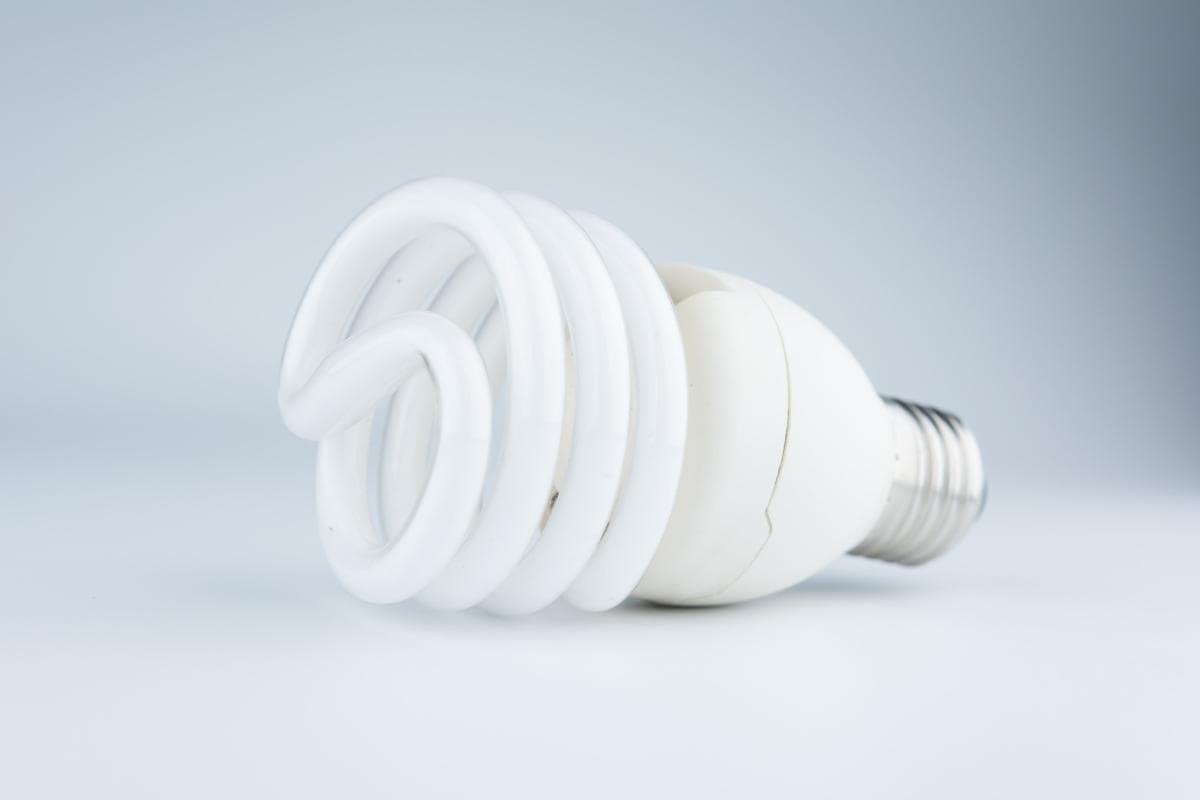
Compact fluorescent light bulbs and lamps(CFL) have brought a revolution in energy-saving lighting. They are a good substitute and replacement for standard incandescent bulbs. Also known as screw-in compact fluorescent bulbs, they are just alike except that they screw into a standard bulb socket while fluorescent bulbs get plugged into lighting fixtures.
The fluorescent light bulb and compact fluorescent light bulb are much alike except for the size difference. Compact fluorescent lamps, CFLs are miniature versions of fluorescent bulbs. They have a compact design, allowing them to get fitted in most household lighting fixtures. Mostly, CFLs have a ballast that is attached to the light bulb, while fluorescent bulbs have a ballast independent of the bulb.
How They Work
CFL or compact fluorescent types of light bulbs contain an electronic or magnetic ballast and a gas-filled fluorescent tube in a single unit. It operates under the same conditions as the mercury vapor fluorescent tube described above but is designed to fit and operate in a standard incandescent light fixture.
The compact fluorescent bulb has a phosphor coating inside it, containing inert gas and a small amount of mercury. When the electric current gets passed through the gas-filled ballast, the gas is charged with electricity and ultraviolet light gets generated. This ultraviolet light excites the phosphor resulting in the light that we see. Different mixes of gas give different light colors which can match the warm glow of the traditional bulb. They are compact because the fluorescent tube has been wound around to only take up the same size space as a traditional bulb.
Compact fluorescent bulbs come in various styles and shapes. They usually have one or two thin tubes bent into a U-shaped model. These tubes are uncovered in some models, and in others, they are covered in a plastic cylinder. The latter appears prettier and more attractive than the former. Also, light output in a CFL is measured in lumens as opposed to watts.
Characteristics
Compact Fluorescent bulbs have a longer rated life, and they consume less electricity than traditional incandescent bulbs. Compact fluorescent bulbs are energy-friendly bulbs that result in high savings of power and in turn, money. They are more expensive than standard bulbs, but since they save lots of energy, they can be less expensive in the long run.
The energy used in a CFL is about 1/4 of an incandescent bulb. To produce the same amount of light, they use only 25%-30% of the electricity compared to an ordinary bulb. That’s a saving of between 70-75%.
These modern fluorescents are quiet, come on instantly and have warmer, color-enhanced tones that mean the harsh bright light of the old standard fluorescent strips is a thing of the past. Most incandescent bulbs provide yellowish energy that is often disliked by people. Compact fluorescent bulbs and lamps provide a white light resulting in a soothing effect to the mind and body.
The lifespan of a CFL is about 10 to 15 times longer than an incandescent bulb at around 10,000 hours or more.
Also, standard incandescent bulbs produce lots of heat that make them hot to touch, and the place also appears warmer. CFLs are cooler than standard bulbs and do not waste heat, and are best suited for indoor lighting. They can be used in open areas as well but should be covered or shaded from the elements.
On the downside, CFLs contain traces of mercury which is a toxic heavy metal. The amounts are exceedingly small, but they do need to be handled with care and recycled when they burn out.
Additionally, CFLs shall not be turned on and off frequently, and that may shorten their life. They shall be used where lights have to be kept on for longer durations. As they have a longer rated life, they won’t need to be replaced too often therefore they can be placed in hard-to-reach places.
Disposal of Compact Fluorescent Light Bulb
CFL, being also a fluorescent bulb, is an environmental hazard and is considered harmful to humans if broken due to the mercury content. Caution should be taken to reduce the risk of exposure and CFLs must be disposed of properly.
Though mercury does not cause any damage while it is inside the housing of the bulb, if the bulb has got damaged or broken up, the bulb should be properly recycled. Improper disposal may lead to environmental contamination.
Though EPA has not regulated the disposal of these kinds of bulbs as the amount of mercury is very low, it is best to put them in local hazardous waste collection for proper recycling. They should never be sent into the incinerator.
LED Light Bulbs
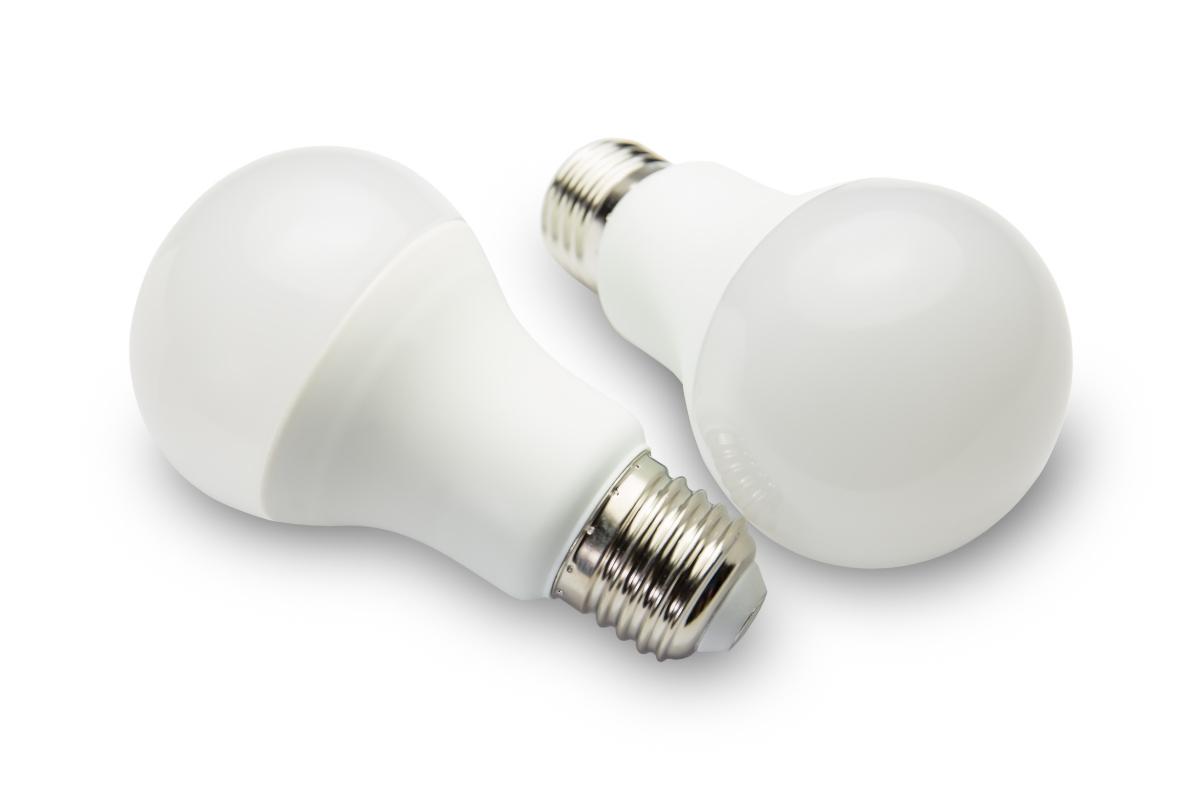
Light-emitting diodes, better known as LED bulbs, are small, solid bulbs that are highly energy-efficient and are widely taking over standard incandescent bulbs. They consume much less energy than traditional bulbs and are very easy to use with a long service life.
How They Work
LEDs are simple semiconductor devices that produce light when electricity flows through them. The technology is improving almost daily, and the limitations of the early versions – such as harsh bright and very directional light – are dropping away.
The technology used is a semiconductor diode that glows when electricity is applied. They can’t burn out as there is no filament to wear out. Because they generate less heat, they never get as hot and are much cooler than incandescent bulbs. They are the most energy-efficient light bulbs of all, using 90% less energy than the traditional incandescent.
The LED type of light bulb or lamp can produce a very bright white or colored light. The is emitted from diodes is not multidirectional; however, most bulbs designed for replacement in incandescent lamps carry many diodes to simulate the light from an incandescent bulb.
Characteristics
LED light bulbs are more expensive than incandescent or CFL light bulbs but they are more energy-efficient than the energy-saving CFLs by about 30%. Though the initial invest is high, the long-term result is more cost-effective than other types of lighting currently available. Furthermore, they are getting cheaper and cheaper, and you can get a solid led bulb with a few dollars. The life of an LED is about three times that of a CFL.
On average, LED light fixtures have been tested to last as long as 50,000 hours and have a lifespan of at least ten years.
The LED lights are available in a variety of sizes and styles. LED types of light bulbs can be used for almost any purpose and are available in a large number of colors. They are also available in dimmable and non-dimmable versions and light up immediately, unlike some of the older energy-saving bulbs based on fluorescent technology.
Traditional bulbs have a glass housing to avoid oxygen around the flammable tungsten filament, but LED bulbs have a plastic housing which makes them easier to maintain and much more efficient, and LED light bulbs are considered to be environmentally safe.
LED like-for-like replacements are now available for almost all the types of bulbs you are likely to want to use in the home. A typical 35W halogen replacement LED will use as little as 4W to produce the same amount of light.
High-Intensity Discharge Light Bulbs
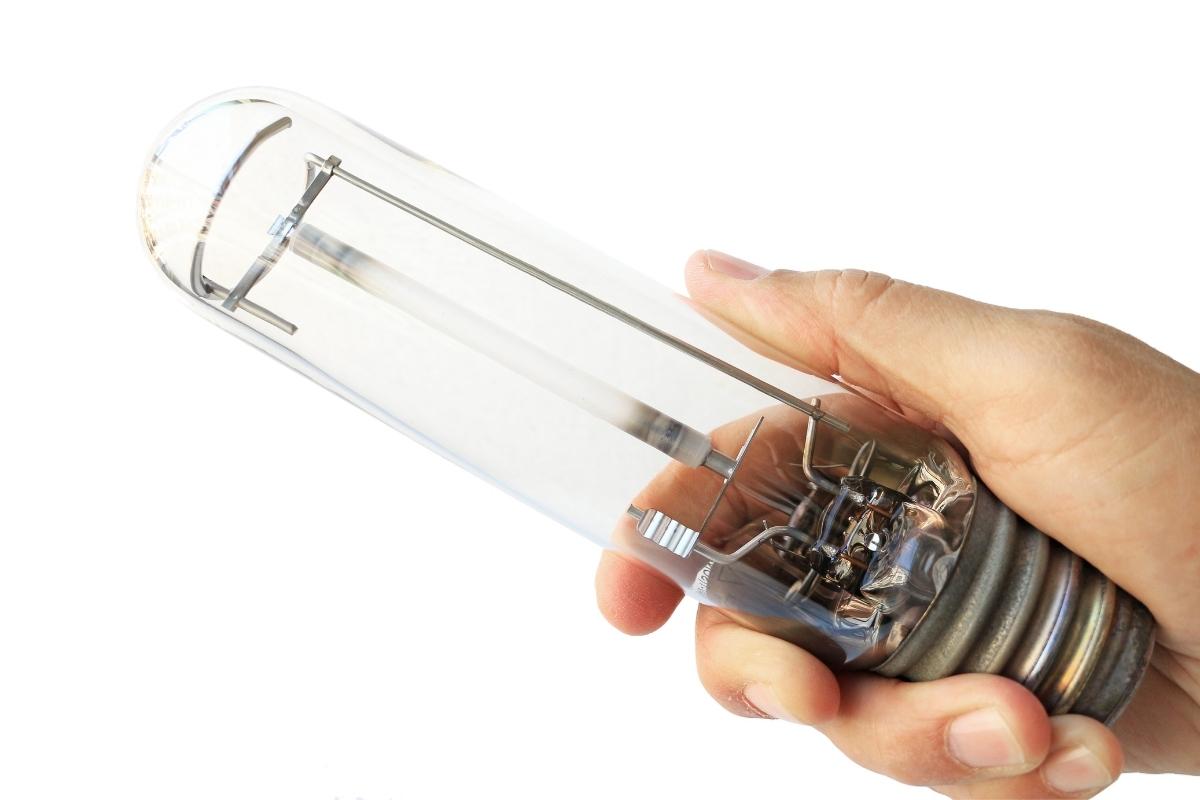
High-intensity discharge lamps(HID) lamps are a type of light bulb that requires ballast. This type of lamp uses an electric arc created between two electrodes to produce light. The ballast is needed to start and maintain the arc, which is more energy efficient because more energy is used for light than in incandescent and fluorescent lights.
There are several different construction methods for HID lamps. Each generally produces a white light but with a slightly different color or hue. Mercury vapor bulbs are a bluish, green color. Metal Halide bulbs are a neutral white color used for applications where white light is important. Sodium vapor produces a yellow light which is more pronounced in the low-pressure lamps but is somewhat corrected for in high-pressure lamps. Ceramic Metal Halide (CMH) lamps produce a bluish light that is close to daylight. These are very economical, using one-fifth the energy of a comparable tungsten incandescent light bulb for the same light output. Xenon short arc is another bulb that produces light similar to sunlight. Used for theater bulbs and searchlights where the bright white light is needed.

